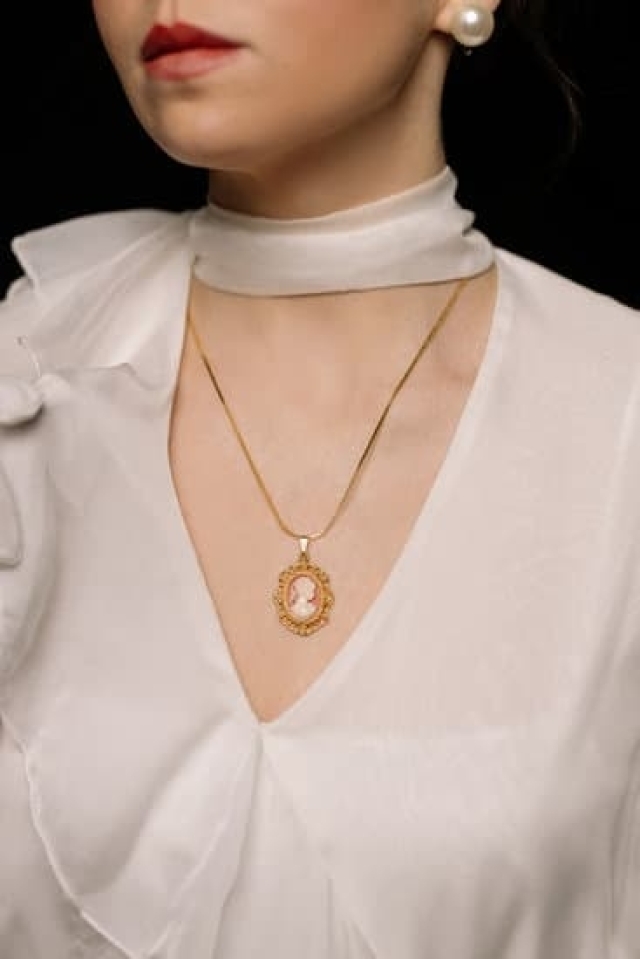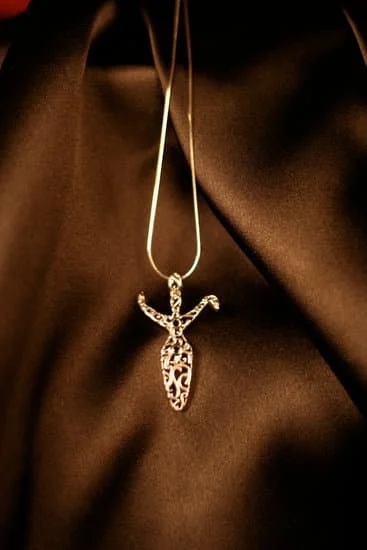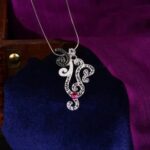The US jewelry market has continually shown a steady increase in growth over the past few years. The industry has seen an impressive compound annual growth rate of 4.1%, greatly outpacing global averages. This is primarily due to increasing customer demand for luxury products, driven by enhanced consumer spending and increased disposable incomes.
Investigations into the domestic buying behavior of American shoppers have led to new strategies and approaches which stand to keep the US jewelry market highly competitive, even against international competitors. As part of this analysis, there are several cross-industry trends that have been identified in terms of how consumers buy jewelry in the United States, as well as what characteristics they value the most when shopping for these products.
Understanding consumer behavior is essential in order to remain competitive within the US jewelry market. Research suggests that Americans overwhelmingly prefer timeless designs, evident in classic engagement rings or expensive watches that serve dual purposes as both timepieces and conversation starters.
The average shopper also places great importance on quality and craftsmanship of their purchases; customers value handmade items more than mass-produced varieties given them greater unique appeal by comparison. Color preferences seem to vary from region to region, while metal type usually remains consistent across most areas of the US thanks to widely accepted gold standards set by key players within the market.
Rising levels of competition have contributed significantly towards price decreases amongst luxury American jewelry stores compared to only a few years ago when prices were much higher for literally no reason other than pricing power disparity between established retail chains and individuals producing bespoke pieces for small local markets alone.
As such, delicately crafted trinkets can now be affordable regardless of budget status – a major shift away from pre-millennial exclusivity found with some high end items just a decade ago or more before then again – making this an opportune time for emerging talent looking to make their mark on the esteemed US jewelry marketplace.
Additionally, online shopping assists in reaching potential buyers far outside traditional geographic boundaries, creating increased access for new designers who might otherwise go unnoticed without this medium providing additional platform exposure opportunities.
Current Macroeconomic Trends Impacting the US Jewelry Market
The US jewelry market is undergoing numerous changes due in part to the current macroeconomic trends. These changes are having a direct effect on how consumers purchase jewelry items and what types of accessories they buy. Some of the primary factors impacting the US jewelry market include:
Supply and Demand
With the global economy in recession, demand for luxury goods such as jewelry has been affected. This affects both prices and availability of certain products. For example, when there is less demand, suppliers may cut back production or stop producing certain types of jewelry altogether resulting in fewer options for consumers. Furthermore, strong economic growth could lead to an increase in supply, resulting in lower prices and more options for customers.
Material Costs
With the rising cost of precious metals and materials used to create jewelry items, this can have a direct impact on production and marketing costs which in turn can affect consumer prices. Companies striving to remain competitive must factor these higher costs into product pricing. Furthermore, suppliers may opt to use cheaper alternatives or use different material compositions such as sterling silver instead of gold which could again influence consumer prices.
Social Media Influence
Social media has become an integral part of our lives and it is now influencing how we purchase items including jewelry products. Customers who are looking for modern pieces often shop online where platforms such as Instagram offer stylish images from brands showcasing their latest designs – generating customers’ purchase decisions significantly faster than traditional print ads or television commercials ever could have done before now.
In addition to this easy access, sales campaigns can also take advantage of data-driven target marketing tools to help reach particular audiences with precision messaging. This is allowing brand developers to propose tailored merchandise that resonates with user’s likes/dislikes more effectively reaching potential buyers with direct messaging resulting in immediate impact on customer purchase decisions today.
Recent Demographics of US Jewelry Consumers
The US jewelry market is a lucrative industry with a strong track record of growth. Over the past two decades, the number of consumers purchasing fine jewelry has increased by almost 50%, and consumer spending on jewelry items like diamonds, gold, and other precious metals has risen to unprecedented levels. Market experts predict that the jewelry sector will grow at a steady rate into the future as well.
One reason for this sustained growth is the changing demographics of US jewelry consumers. According to statistics from the National Jeweler’s Association (NJA), Millennials are now the largest purchasers of fine jewelry in America, comprising over half of all customers.
Meanwhile, Baby Boomers and Gen Xers have steadily declined in terms of the share they make up of US jewelry customers. Although these older generations still account for some spending, they simply don’t purchase as much jewelry as their younger counterparts do.
Millennials are drawn to contemporary styles and trends such as personalization, mixed metal alloy styles, lab-created gemstones, ethically sourced materials and vibrant colors. Also key to this particular generation is affordability – an area where major retailers such as Walmart have recently capitalized on offering cheaper alternatives for steel or costume jewelry at mass market prices alongside traditional specialty stores that offer high quality merchandise at more premium prices.
Another factor driving growth in US jewelry purchases is internet retailing with online stores offering product convenience and interest free financing often taking precedence over bricks and mortar options.
According to data from eMarketer’s Retail Ecommerce Forecast 2019 report online sales are expected to exceed $650 billion in 2020 representing nearly 13% of total retail sales within the US economy making it a force to be reckoned with in many sectors including Jewelry where plenty of opportunities remain available regardless which customer segment one caters for or what selling channels one utilizes.
Regional US Jewelry Market Insights
The jewelry market in the United States is one of the largest in the world, due to its mature framework and presence of multiple international players. According to a 2018 report by IBISWorld, the US jewelry market was worth USD 100 Billion. This number is expected to continue growing, with estimates showing that it will reach USD 112 Billion by 2023. Some of the major factors driving this growth are:
- Increasing demand for luxury products among millennials
- Growing online retail industry for jewelry
- Rise in disposable income in middle-class consumers
- Preference for gold and diamond jewellery according to religious beliefs.
The US jewelry markets are segmented into various regions, each with its own set of trends influencing the sector’s growth.
New York
The New York State comprises roughly 5% of the population and has an estimated jewelry market size of USD 7 billion. The area’s most popular item is luxury watches, which account for around 24% of total sales. There is also a significant demand from tourists who come from all over the world for affluent items such as gemstones and diamond earrings. Additionally, regulations prohibiting unethical labor practices have drawn millennial purchasers towards embracing ethical jewelers.
Midwest Region
The Midwest region of United States comprises Mid-Atlantic and other mountain states that together contribute about 18% to the total US jewelry market sales. This region enjoys healthy sales owing to its huge commuter population with strong purchasing power; research show majority purchases being undertaken at retail stores.
Popular high-end items purchased include diamond encrusted earrings, necklaces or pendants; popular bridal present items include watches and bracelets featuring traditional American designs like heart-shaped pave diamond pieces or leather bands studded with turquoise stones.
Los Angeles
Approximately 6% of the total country’s jewellery market comes from Los Angeles alone despite having a smaller population compared to New York City or Chicago. While women traditionally favor statement diamond pendants or earrings along with semi-precious stones; men prefer watches style wristwear such as stainless steel chronograph cases or handmade leather bands, indicating their preference for minimalistic adornments within everyday wearables context regardless of gender barriers.
Furthermore Los Angeles customers are quite ethically conscious when it comes to buying ensembles featuring lab grown diamonds or responsibly sourced traditional earth mined precious stones which assure them transparency throughout product sourcing process as well as assurance on non contribution towards any unethical mining activities.
Top Jewelry Brands and Designers in the US
Jewelry is constantly changing, as it follows fashion trends and improves upon earlier designs. The US jewelry market is worth billions of dollars per year, and the trendiest pieces and brands are constantly in flux. Here’s a closer look at some popular American jewelry brands and designers:
- Tiffany & Co., based in New York City, has been producing some of the world’s finest jewelry for over 170 years. They specialize in diamond engagement rings, sapphires, emeralds, pearls and gemstones. Classic pieces such as their diamond solitaire beads charm bracelets remain timeless favorites among shoppers
- David Yurman is an American haute-joaillerie brand with boutiques across the country. Their pieces include signature silver cable bracelets accented with precious stones like malachite, quartz, diamonds, lapiz lazuli etc
- Cartier is a worldwide renowned luxury lifestyle brand that has been operating since 1847. Their collections include elegant wedding bands as well as classic pendants and cocktail rings decorated with colorful gemstones such as sapphires and amethysts
- Harry Winston has grown to become one of the most beloved luxury jewelers in the US. They specialize in high-end diamond statement pieces such as shimmering earrings and necklaces encrusted with pearls, rubies or intricate cutouts
- Elizabeth Taylor was also an acclaimed figure in the industry known for her own iconic collection of costume jewelry based on her love for luxurious items like pink starfish brooches or bright turquoise cuffs
The US jewelry market continues to evolve each year – new designers are launching brands every day while classic ones remain relevant by reinterpreting designs from past times into modern takes on traditional styles. Popular metals used for these pieces include gold, platinum, iridium or brass while stones range from cubic zirconia to diamonds of various colors and clarity grades. There’s so much variety across America that everyone can find their perfect piece.
US Jewelry Market Trends by Category
1. In terms of market share, the fashion jewelry segment comprises a large portion of the US jewelry market. It is reported that this category accounts for close to 70% of total sales in dollar value. This reflects an increase from previous years as an increasing number of consumers look to buy fashionable, affordably priced pieces of jewelry which offer more design value than traditional pieces.
2. Similarly, the costume jewelry segment has experienced robust growth in recent years due to their lower prices when compared with traditional pieces and silver or gold items. Costume jewelry typically incorporates materials such as synthetic stones and metal plating that are combined with beads or various finishes to create attractive statement pieces at relatively low costs. This makes it a cost-effective option for those looking to accessorize their outfits without breaking the bank.
3. Nevertheless, despite its higher price point when compared with some other types of jewelry, particularly costume and fashion based items, fine gold jewelry still has a significant presence in the US market and remains popular among customers who prefer greater quality and durability for their money’s worth.
The luxury segment of this market is also seeing diverse changes from year to year; many customers now making purchases online instead of brick-and-mortar stores due to convenience factors coupled with competitive pricing shifting them away from high-end outlets.
- Fashion Jewelry – Accounts for 70% of total sales
- Costume Jewelry – Robust growth in recent years
- Fine Gold Jewelry – Significant presence in US market
- Luxury Segment – Shifts towards online shopping
Emerging US Jewelry Market Trends
The US jewelry market continues to grow and evolve as people’s tastes get more diverse and luxurious. In 2020, the market was estimated to be worth over $81 billion, but in 2021 that number is likely to increase due to new trends.
Trend 1: Modern & Luxurious Design
Some of the most popular jewelry trends are modern and luxurious designs made from precious metals such as gold, silver, platinum and diamonds. These pieces often incorporate geometric shapes like triangles or chevrons and have intricate detailing that makes them stand out from other jewelry designs. This type of jewelry looks expensive and sophisticated and is seen as a status symbol for its wearer.
Trend 2: Personalized Jewelry & Gifts
Personalized jewelry has grown in popularity as people look for unique gifts that their loved ones will cherish forever. This includes items like monogrammed necklaces or bangles with special messages engraved on them, or custom-made rings with stones representing a certain meaning or emotion. Personalization provides a connection between the gift giver and receiver which makes it even more special.
Trend 3: Sustainable Jewelry Options
As customers become more aware of the environmental implications of the jewelry industry, sustainable jewelry options are becoming increasingly sought after. Sustainable materials include those sourced from recycled metals, conflict-free diamonds, ethically sourced gold, lab-grown diamonds or secondhand jewelry that’s been repurposed into something beautiful. By making changes within their supply chain processes, jewelers can ensure their products are produced in an ethical manner without compromising on quality or design.
List of Trends
- Modern & Luxurious Design: Geometric shapes with intricate detailing.
- Personalized Jewelry & Gifts: Monograms and engravings that add personalized value.
- Sustainable Jewelry Options: Recycled metals, conflict-free diamonds, ethically sourced gold etc.
Strategies for Adapting to Evolving US Jewelry Market Trends
The US jewelry market is constantly transforming. To stay competitive, it is essential to stay abreast of the current shifts emerging in the international market. This article provides an overview of the strategies to adapt to evolving US jewelry market trends.
Stay informed
It is important to research jewelry-related updates that could broaden or restrict a business’s operations. Utilizing reliable sources such as industry reports and magazines can help companies assess the pulse of the industry and explore strategies that match their capabilities. Additionally, joining relevant industry organizations such as Jewelers of America and American Gem Society can offer potential insights from respected leaders in the field.
Evaluate customers’ buying trends
Understanding customers’ preferences has never been so important. Keeping up with eCommerce statistics, targeted at different age-groups and demographic locations will provide insights on recent buying patterns, helping businesses shift product lines according to customer interests. Moreover, monitoring competitors’ practices and engaging with existing clients also offers more information regarding which styles are being sought out in the current market.
Utilize technology
Does your business make use of progressive technologies? Investing in marketing automation tools such as email campaigns or even artificial intelligence-based recommendations can rework customer engagement experiences significantly; thereby allowing for better targeting and improved sales figures down the line. Additionally, leveraging 3D-rendering capabilities allows real-time virtual previews of jewelry pieces before entering production; saving additional costs due attempts at further alterations.
- Expansion Strategies
- Stay informed
- Evaluate customer’s buying trends
- Ensure effective use of technology
Opportunities for US Jewelry Marketers
The US jewelry market has seen a steady rate of growth over the past few years. According to Statista, the jewelry industry is estimated to generate 88 billion dollars in revenue by 2024. This increase in consumer demand has created numerous opportunities for marketers within the sector.
Jewelry as a fashion accessory is becoming increasingly popular among consumers seeking to express their individuality and sense of style. Consumers are no longer just looking for traditional metals and stones when they purchase jewelry; they’re looking for something that stands out and reflects who they are and what they believe. As such, marketers have an opportunity to target consumers through personalization campaigns, using tactics such as customizing pieces based on lifestyles or preferences.
In addition, due to the rise of e-commerce businesses, jewelry marketers now have an avenue to reach more potential customers from around the world than ever before. By selling products directly online through websites or social media platforms like Instagram, marketers can leverage technology to reach new demographics of potential buyers whom they may not have had access to otherwise.
With this newfound ability comes an opportunity for marketers to use digital marketing techniques such as email marketing or experiential marketing campaigns to find and engage with prospective customers globally.
Finally, US jewelry stores are increasingly focusing on creating unique experiences that go beyond just finding beautiful accessories. They’re offering personalized services (such as repairs) that leave shoppers feeling engaged and appreciated resulting in higher sales and customer loyalty. As a result, savvy marketers should focus on creating meaningful consumer experiences that foster brand recognition and build loyalty with their target audience.
Conclusion
The US jewelry market is constantly changing and developing. This is due to the culture, technology, products, and services that are being offered. Over the course of the last few years, the US jewelry market has seen increased demand for luxury pieces with higher price points. This increase can be attributed to many factors such as improved purchasing power of high-income groups and greater prevalence of celebrity influencers inspiring trends among younger shoppers.
In addition to higher priced products like luxury watches, fine jewelry made with precious gems or done in a unique style is also increasing in demand among shoppers in the US. Fine jewelry exhibits a range of styles, from traditional white diamonds classic bracelets to statement pieces featuring bold colors and avant garde silhouettes.
As we look at these trends over time, we can see that retailers are investing heavily in creating fine jewelry collections and providing an array of options for customers interested in this type of product.
Finally, another trend impacting the US jewelry market is customization and personalization options being offered by companies both for fine jewelry as well as more affordable costume pieces. These types of products offer customers an opportunity for self-expression while simultaneously providing more affordable pieces allowing them access without breaking their budget.
Companies offering custom features such as engravings or coloring options have become increasingly popular over recent years and will likely continue to grow in relevance going forward due to their continued success amongst consumers nationwide.
In conclusion, several trends continue to shape the landscape of the US jewelry market; namely more expensive luxury pieces accompanied by an emphasis on fine details and craftsmanship; bolder designs focusing on creative silhouettes and colors; and custom offerings which allow for personalization through engravings or coloring solutions amongst other features.
Together these shifts have drastically impacted profits for retailers across various sectors while giving consumers new ways to not only show off their style but also express themselves with unique pieces tailored specifically towards them.

Welcome to my jewelry blog! My name is Sarah and I am the owner of this blog.
I love making jewelry and sharing my creations with others.
So whether you’re someone who loves wearing jewelry yourself or simply enjoys learning about it, be sure to check out my blog for insightful posts on everything related to this exciting topic!





